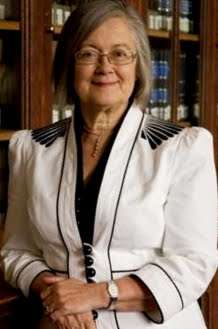President of the Supreme Court of the United Kingdom
| President of the Supreme Court of the United Kingdom | |
|---|---|
| Supreme Court of the United Kingdom | |
| Style |
The Right Honourable (within the UK and the Commonwealth) My Lord/Lady (when addressed in court) |
| Status |
Head of a court Chief judge |
| Seat | Middlesex Guildhall, London |
| Appointer |
The Monarch on advice of the Prime Minister |
| Term length | Life tenure (with a mandatory retirement age[fn 1]); may be removed by Parliament[3] |
| Constituting instrument | Constitutional Reform Act 2005 |
| Precursor | Senior Lord of Appeal in Ordinary |
| Formation | 1 October 2009 |
| First holder |
Lord Reid as Senior Lord of Appeal in Ordinary Lord Phillips of Worth Matravers as President of the Supreme Court (1 October 2009) |
| Deputy | Deputy President of the Supreme Court |
| Website |
www |
The President of the Supreme Court of the United Kingdom is the head of the Supreme Court of the United Kingdom. The office is equivalent to the now-defunct position of Senior Lord of Appeal in Ordinary, also known as the Senior Law Lord, who was the highest ranking among the Lords of Appeal in Ordinary (the judges who exercised the judicial functions of the House of Lords). The current President is Baroness Hale of Richmond.
History
From 1900 to 1969, when the Lord Chancellor was not present, a former Lord Chancellor would preside at judicial sittings of the House of Lords. If no former Lord Chancellor was present, the most senior Lord of Appeal in Ordinary present would preside, seniority being determined by rank in the peerage. In the years following World War II, it became less common for Lord Chancellors to have time to gain judicial experience in office, making it anomalous for former holders of the office to take precedence. As a result, on 22 May 1969, the rules were changed such that if the Lord Chancellor was not present (as was normally the case) the most senior Law Lord, by appointment as a Lord of Appeal in Ordinary rather than peerage, would preside.[4] In 1984, the system was amended to provide that judges be appointed Senior and Second Senior Lords of Appeal in Ordinary, rather than taking the roles by seniority. The purpose of the change was to allow an ailing Lord Diplock to step aside from presiding, yet remain a Law Lord.[5]
On 1 October 2009 the judicial functions of the House of Lords were transferred to the new Supreme Court under the provisions of the Constitutional Reform Act 2005. The Senior Law Lord, Lord Phillips, and the Second Senior Law Lord became President and Deputy President of the new court. The same day, the Queen by warrant established a place for the President of the Supreme Court in the order of precedence immediately after the Lord Speaker (the Speaker of the House of Lords).
List of Senior Lords of Appeal in Ordinary
- Lord Reid (1969–1975)
- Lord Wilberforce (1975–1982)
- Lord Diplock (1982–1984)[5]
- Lord Fraser of Tullybelton (1984–1985)[6]
- Lord Scarman (1985–1986)[6]
- Lord Keith of Kinkel (1986–1996)[6][7]
- Lord Goff of Chieveley (1996–1998)[7]
- Lord Browne-Wilkinson (1998–2000)
- Lord Bingham of Cornhill (2000–2008)
- Lord Phillips of Worth Matravers (2008 – 30 September 2009)
List of Presidents of the Supreme Court
| Image | Name | Born | Alma mater | Presidency started | Presidency ended | Prior senior judicial roles |
|---|---|---|---|---|---|---|
 |
Lord Phillips of Worth Matravers | 21 January 1938 (age 80) |
King's College, Cambridge | 1 October 2009 | 30 September 2012 | Senior Lord of Appeal in Ordinary (2008–2009) Lord Chief Justice of England and Wales (2005–2008) Master of the Rolls (2000–2005) Lord of Appeal in Ordinary (1999–2000) |
.jpg) |
Lord Neuberger of Abbotsbury | 10 January 1948 (age 70) |
Christ Church, Oxford | 1 October 2012 | 4 September 2017 | Master of the Rolls (2009–2012) Lord of Appeal in Ordinary (2007–2009) Lord Justice of Appeal (2004–2007) |
 |
Baroness Hale of Richmond | 31 January 1945 (age 73) |
Girton College, Cambridge | 5 September 2017 | Incumbent | Lord of Appeal in Ordinary (2004–2009) Lord Justice of Appeal (1999–2003) Justice of the High Court, FD (1994–1999) |
See also
Notes
- ↑ The mandatory retirement age for judicial offices —including the judges of the Supreme Court— is 70, as introduced in the Judicial Pensions and Retirement Act 1993. However, that only applies to judges first appointed to a judicial office after the commencement of the relevant provisions of that Act (31 March 1995). Judges who were appointed before (and have served continuously since) that date have the same mandatory retirement age as was applicable in their office before the Act, which is 75.[1][2]
References
- ↑ "Judicial Appointments - Constitution Committee". parliament.uk. House of Lords. Retrieved 30 June 2018.
- ↑ "Information Pack — Vacancy for President of The Supreme Court of The United Kingdom" (PDF). Supreme Court of the United Kingdom. Retrieved 30 June 2018.
- ↑ Constitutional Reform Act 2005 c 4 s 33
- ↑ House of Lords Debates 22 May 1969 c 468–71.
- 1 2 House of Lords Debates 27 June 1984 c 914–18
- 1 2 3 "Obituary: Lord Keith of Kinkel". The Scotsman. 28 June 2002. Retrieved 15 April 2011.
- 1 2 "No. 54543". The London Gazette. 4 October 2011. p. 13211.
.svg.png)
